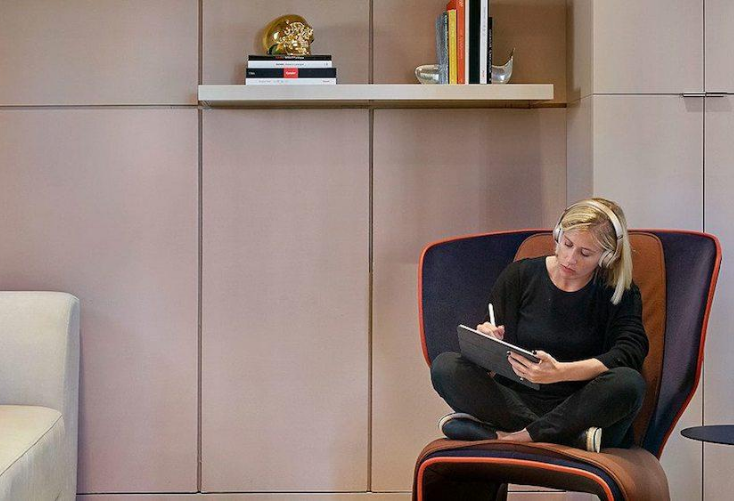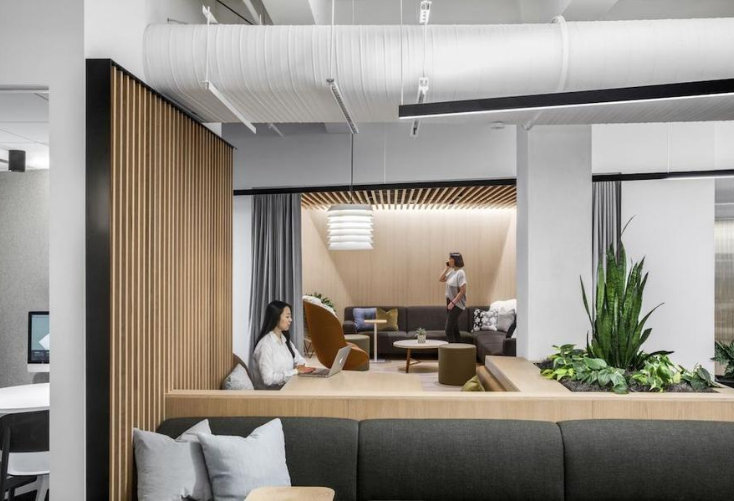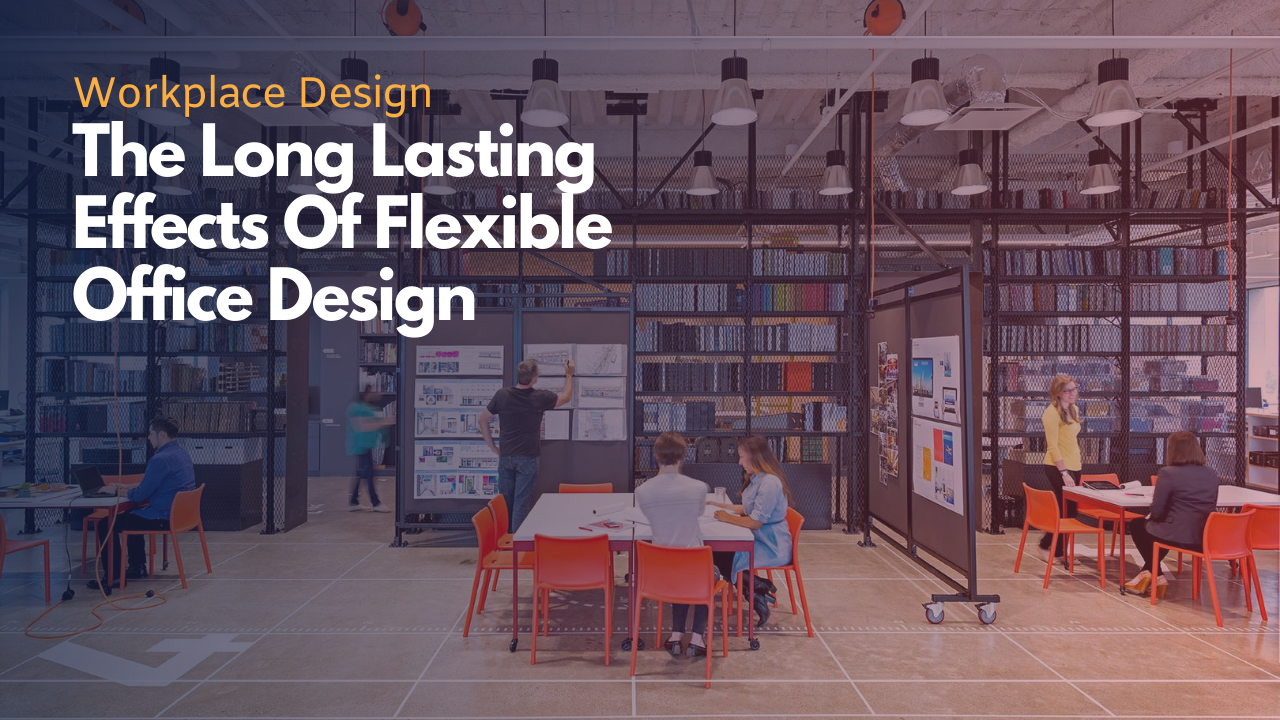- The effects of COVID-19 on the workplace are still unfolding, but what is clearly emerging is that workers expect crucial changes before they’re comfortable returning to the office.
- Workplace design will play an integral role in fostering our new blended work week and smaller team-based collaborations.
- Organizations need to create workspaces that are flexible and nimble, but more importantly, workspaces where people come together.
This article was originally published on Work Design Magazine.
Flexible office design can bring joy, energy, collaboration and efficiency to workplace environments, this is nothing new. Today, people are rapidly developing new ways to work. Ideas are sprouting up at home offices everywhere, whether it is using an ironing board to create a sit-to-stand desk, researching the best Zoom background, or creating a new product to make the world better.
Employers are also tasked with staying nimble. Corporations are looking at the numbers of people currently working at home and wondering, do we need to keep our brick and mortar locations? Should we adjust how work occurs at these locations? People want to feel connected and proud of their work. Happy employees work together like a finely knitted afghan, but do we need to sit together five days a week any longer? How can we create spaces where people can come together, just not stay together?
Remote work, while undeniably cost-effective, tends to significantly inhibit collaboration even over digital channels. While studying a major technology company from 2008 to 2012, remote workers communicated nearly 80 percent less about their assignments than collocated team members did; in 17 percent of projects they didn’t communicate at all. The obvious implication: If team members need to interact to achieve project milestones on time, you don’t want them working remotely. (Harvard Business Review, 2019)

A migration started several years ago to bring virtual workers back into the office from their homes. Companies learned that keeping teams together in the same physical space fosters random collaboration, and constant mentoring needed to develop a successful project. But, now because of the new world we are living in, companies are considering keeping more workers at home permanently. The challenge for this is what will office spaces of the future look like?
First, we need to learn from our past
Tech workers will need unique spaces once they come back to the office. Their day-to-day work will likely remain outside the office but their “together” time could see the development of a new collaboration space. Tech workers are some of the most agile and many have possibly worked from home in the past, quite happily. In an agile team, members are provided a “project” to complete together and to ensure each one is moving forward on his or her assigned task, they gather for short periods of time. Good design can play a significant role in efficiency, and companies are looking for flexible spaces and schedules for workers to gather to facilitate collaboration.
One approach to this model is to develop a system of shared work points. Instead of dedicated seats, designers will focus on agile environments that can serve multiple uses. In lieu of the dedicated workspace for the individual, project rooms will need to be developed for teams, and the first thing to consider is space.

Every team needs a home base and project rooms will require more space than previous layouts. Employees will need to engage while keeping their distance and project rooms are a solution if they are fully dedicated to the team and not shared spaces for others to use. Keeping them fresh without daily use could be a challenge. For team members to maintain their distance, the furniture should be larger in scale with wider and deeper dimensions. Tech groups love glass markerboards and generally you cannot have enough. It’s also important to give the space some character.
In addition to the project rooms model, more companies are now envisioning a hybrid future, with more time spent working remotely, yet with opportunities to regularly convene teams. CompuCom Inc. may institute “core hours” for its employees, similar to office hours professors hold on college campuses. The idea is that teams would agree to gather for a limited time on certain days of the week to bounce ideas off each other, collaborate and strategize.
Online education provider Coursera expects half of its 650 employees to work “blended” hours once the pandemic passes, with staffers spending three days a week in the office and the rest remote. (The Wall Street Journal, 2020)
Even as we are working with several ideas on reimagining the workplace, it’s worth noting that we are very much in the research and discovery phase. Through consulting and strategic planning with our clients, we are continually uncovering potential long-term design solutions.

Bringing Comfort to the Office
Bringing the home aesthetic into the office has been a trend that should not go away. Having a casual environment will help bring calm and comfort to the workspace. This relates to more soft seating, living room style spaces. Keeping the office clean will require some material changes.
In a reaction to the pandemic, specifiers will want to use more cleanable surfaces. Antimicrobial fabrics have come a long way, they are softer to the touch and do not need to feel like a café diner vinyl seat to be cleanable. The casual aesthetic should be woven in at every space, accented with graphics, and accessories, to keep the hospitality vibe. Providing variable seat height choices is also important to allow employees to sit away from tables while still engaging in conversations.
Don’t forget the outdoor spaces. Outdoor work lounge areas are a favorite amenity for leasing agents. Offering outdoor areas is critical to the work environment as they bring a mental release and encouragement of fresh air. Outdoor coworking spaces with Wi-Fi are invaluable.
With any successful office space there is a level of care-taking that also facilitates the softer side of a company’s culture. In the first few weeks after starting a new job or joining a new company, employees are particularly sensitive to the cultural and behavioral norms around them. How their new colleagues dress, how they behave, what they talk about, and so on.
Nokia implements a rigorous onboarding procedure to make sure new employees are connected to their teams and beyond. The supervisor formally introduces the new employee to at least six members of their team. But they do not stop there, they also commit to introducing the newcomer to six people outside their team. Within just weeks of joining or starting a new role there, people become part of a rich network that extends beyond their group. (Harvard Business Review, January 2009)

Whatever happens in the months ahead, design will play an integral role in fostering our new blended work week and smaller team-based collaborations. Helping us all to be more creative, happy, productive and fully engaged with our peers.
The effects of COVID-19 on the workplace are still unfolding, but what is clearly emerging is that workers expect crucial changes before they’re comfortable returning to the office. In the interim, it is important to pivot with new flexible office design typologies and features as employees look to reimagine office design.

 Dr. Gleb Tsipursky – The Office Whisperer
Dr. Gleb Tsipursky – The Office Whisperer Cat Johnson – Coworking Marketing Maven
Cat Johnson – Coworking Marketing Maven Angela Howard – Culture Expert
Angela Howard – Culture Expert Drew Jones – Design & Innovation
Drew Jones – Design & Innovation Andrea Pirrotti-Dranchak – Competitive Advantage
Andrea Pirrotti-Dranchak – Competitive Advantage Jonathan Price – CRE & Flex Expert
Jonathan Price – CRE & Flex Expert Jeremy Fennema – Tech Innovation Alchemist
Jeremy Fennema – Tech Innovation Alchemist







